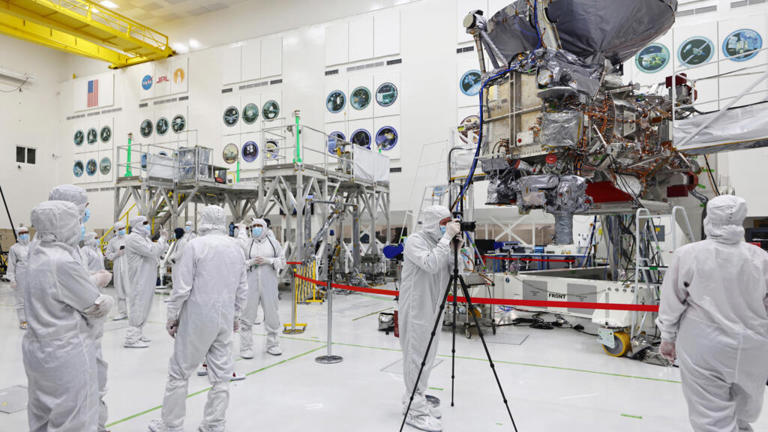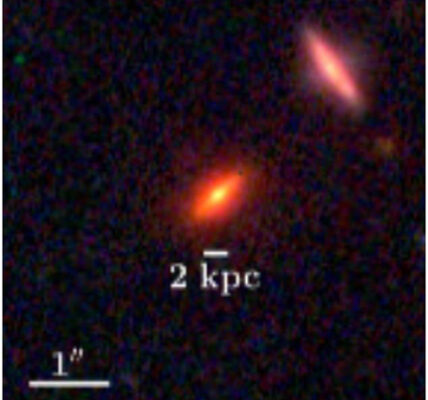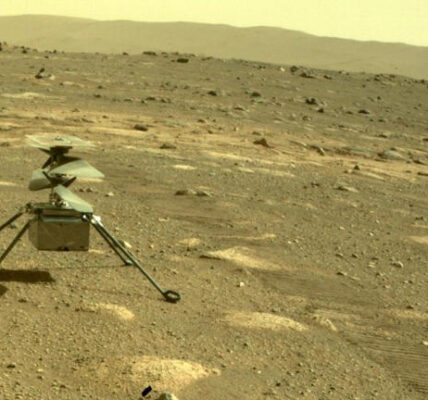Europa Clipper Mission to Find Alien Life is set to explore Jupiter’s moon Europa, 628 million kilometers from Earth, searching for conditions that could support extraterrestrial life.

© Mario Tama / Getty Images
Europa Clipper Mission to Find Alien Life
NASA’s Europa Clipper Mission to Find Alien Life is one of the most anticipated space missions of our time. This mission aims to explore Europa, one of Jupiter’s moons, which is located 628 million kilometers from Earth. The spacecraft will search for clues to determine if Europa could harbor conditions suitable for life. Europa is an “ocean world,” and scientists believe that beneath its thick, icy surface lies a vast ocean that could potentially host life.
The mission’s goal is to study whether Europa’s environment could support extraterrestrial life. While it is not designed to directly detect life, it will investigate the moon’s potential habitability by searching for signs like water, heat, and organic compounds. The discoveries from the Europa Clipper Mission to Find Alien Life could bring us closer to understanding if life exists elsewhere in the solar system.
The Launch of the Europa Clipper
The Europa Clipper Mission to Find Alien Life is set to launch from NASA’s Kennedy Space Center in Florida. The spacecraft, powered by solar energy, will begin its long journey to Europa, aiming to reach the icy moon by 2030. It will take over five years to arrive at its destination, using gravity boosts from Earth and Mars to speed up its journey. Although a European mission launched in 2023, the Clipper’s gravity-assisted route will allow it to arrive first.
At over 100 feet in length, the Europa Clipper is the largest spacecraft ever built by NASA for a planetary mission. Its massive size is necessary to support the large solar panels that will power the spacecraft on its journey far from the Sun. Delayed by Hurricane Milton, the launch was initially postponed, but now the mission is back on track, with scientists eager to uncover the mysteries of Europa.
What Makes Europa Intriguing?
Europa is one of Jupiter’s 95 moons and has been a subject of fascination for scientists since the 1970s. It is considered an “ocean world” because beneath its icy crust lies a vast ocean of liquid water, potentially twice the amount of water found in Earth’s oceans. This discovery sparked curiosity, as liquid water is one of the key ingredients for life. The Europa Clipper Mission to Find Alien Life will explore this ocean, investigating if the conditions within it could support life.
Past missions have provided tantalizing glimpses of Europa. In the 1990s, NASA’s Galileo spacecraft captured images of Europa’s surface, showing dark cracks that might contain salts and sulfur compounds—materials that could be linked to biological activity. More recently, the James Webb Space Telescope spotted plumes of water erupting from Europa’s surface, which added to the excitement about the moon’s potential for life.
The Science Behind the Europa Clipper Mission
The Europa Clipper Mission to Find Alien Life carries nine advanced scientific instruments to help gather data. These tools will analyze Europa’s surface, looking for organic compounds, gases, and other indicators of habitability. Scientists believe that three essential ingredients are required for life: liquid water, a source of heat, and organic materials. If Europa has all three of these in stable conditions, it could be one of the best places to search for life in our solar system.
The Europa Clipper Mission to Find Alien Life is unique because it is searching for a world that might be habitable today, unlike other missions that study ancient environments that may have supported life billions of years ago. This opens up exciting possibilities for discovering environments that are still active and potentially capable of sustaining life.
Why This Mission Matters
Finding life—or the potential for life—on Europa would be one of the most groundbreaking discoveries in human history.
Europa’s ocean is not only massive, but it is also believed to be in contact with the moon’s rocky core. This could provide a heat source and the right chemical reactions to support life. The data gathered by the Europa Clipper Mission to Find Alien Life will help scientists understand if these conditions exist and whether Europa could be a potential home for alien life.
Conclusion
The Europa Clipper Mission to Find Alien Life is a major step forward in humanity’s quest to explore the outer reaches of our solar system. While the mission will take several years to reach Europa, the knowledge it will bring back could have profound implications for our understanding of life beyond Earth. The possibility of discovering conditions suitable for life on another world brings us closer to answering the age-old question: Are we alone in the universe?
As NASA’s spacecraft embarks on this ambitious journey, the world watches with anticipation. The Europa Clipper Mission to Find Alien Life could unlock the secrets of one of Jupiter’s most mysterious moons and pave the way for future explorations of other ocean worlds in our solar system.Related:
Mars Climate History and Life Hopes: 3 Devastating Findings



